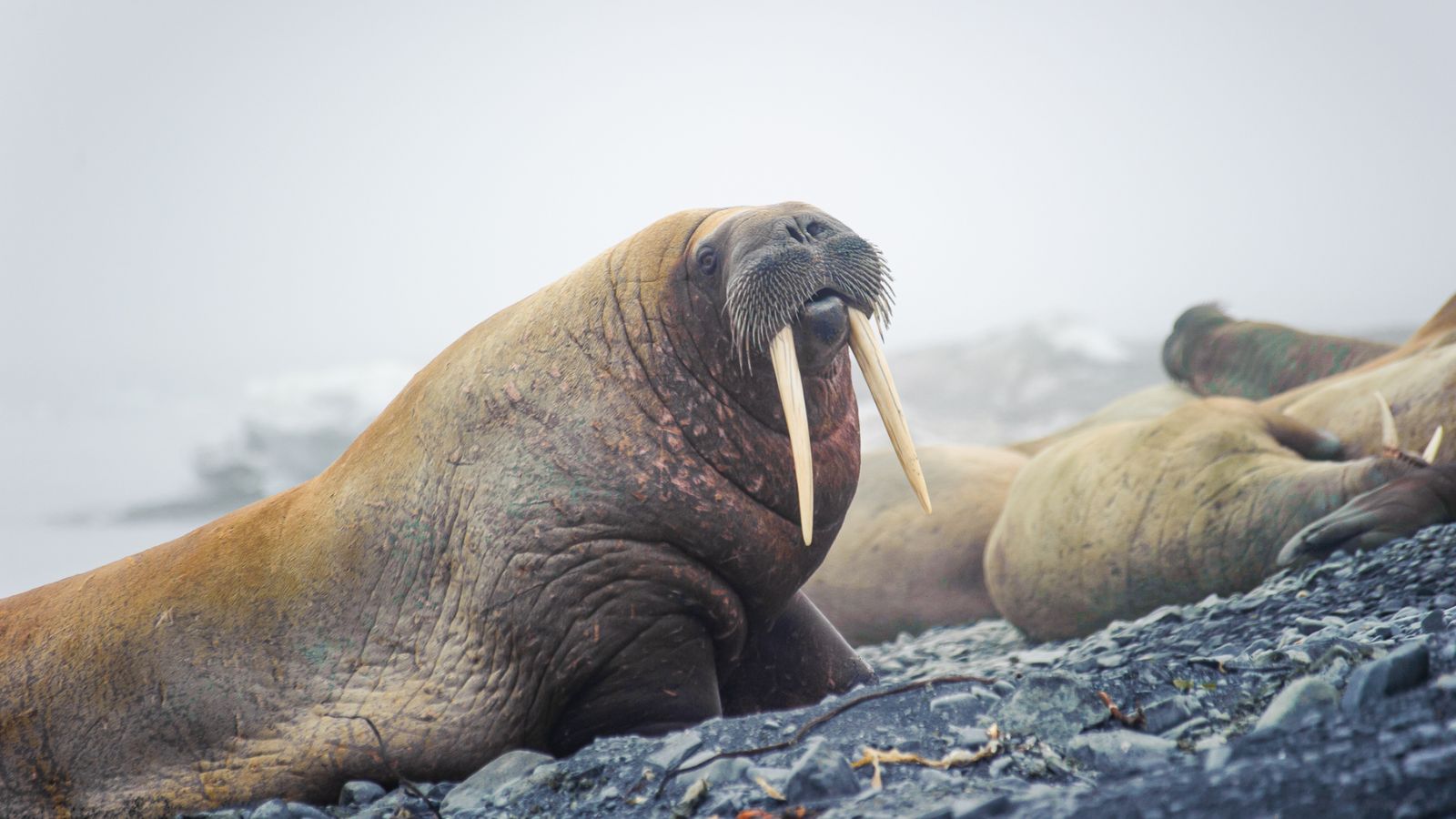The walrus is a pretty amazing creature that often goes underrated for some reason. So today, we’re here to change that by showing you 18 amazing facts about this species that will totally shock you.
Walruses Have Vacuum-Like Feeding Techniques

Did you know that walruses can consume up to 6000 clams in one feeding session? According to WWF Arctic, this is because of their vacuum-like feeding techniques. They create a vacuum with their lips to swiftly suck the meat out of the clam’s shells. Impressive!
They Can Change Color Based on Temperature
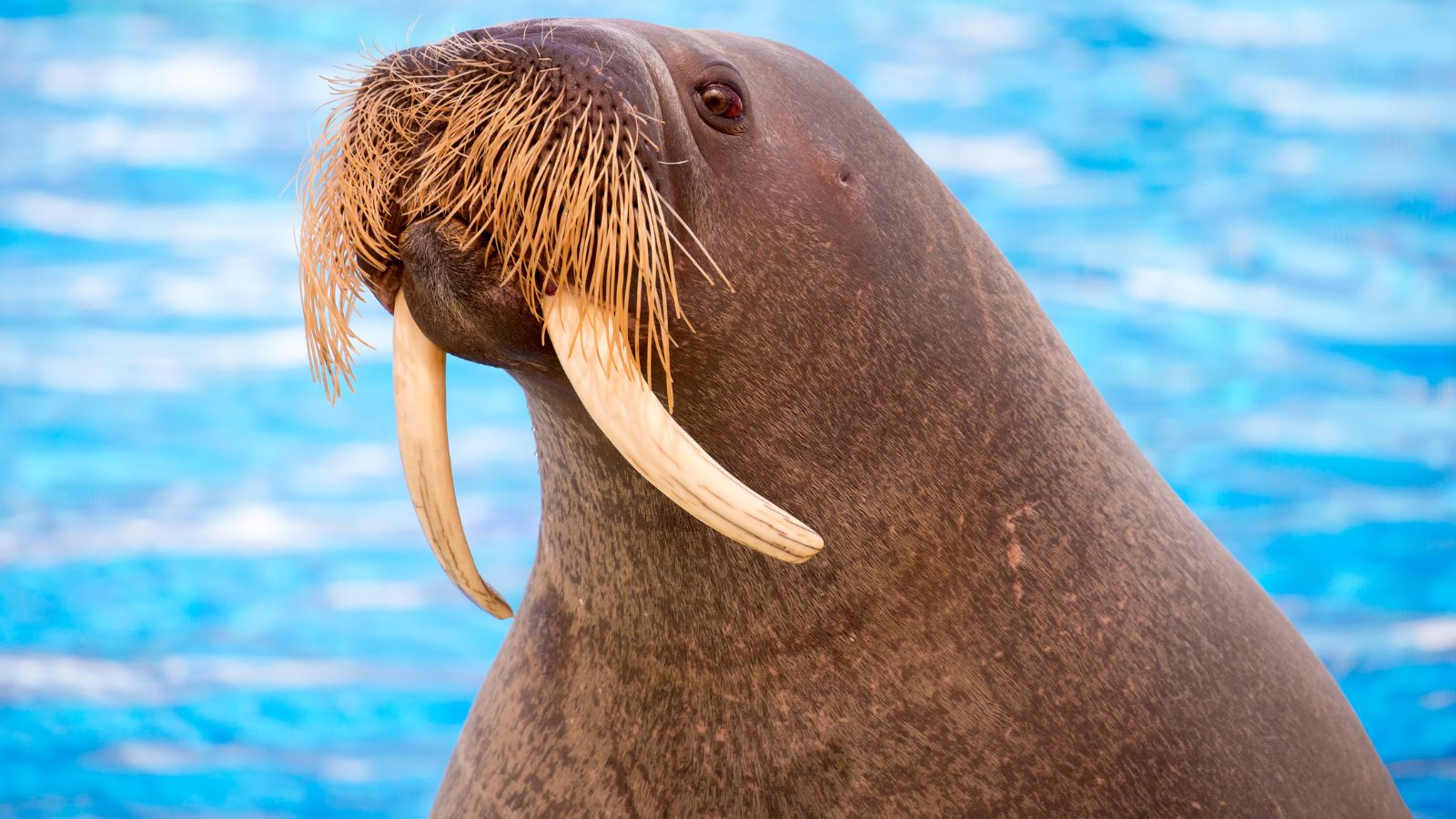
Believe it or not, a walrus’s color will change from the brown we tend to recognize it into a rosy pink when it gets into warmer weather. In fact, it can even become a full white color when it dives into icy waters.
Walruses Are Fast Runners on Land

You might not expect to see a walrus covering much ground on land, but these creatures are actually pretty quick! In fact, they can run as fast as humans when they get up to speed, as they use their flippers like dogs.
They Sing Underwater During Mating Season
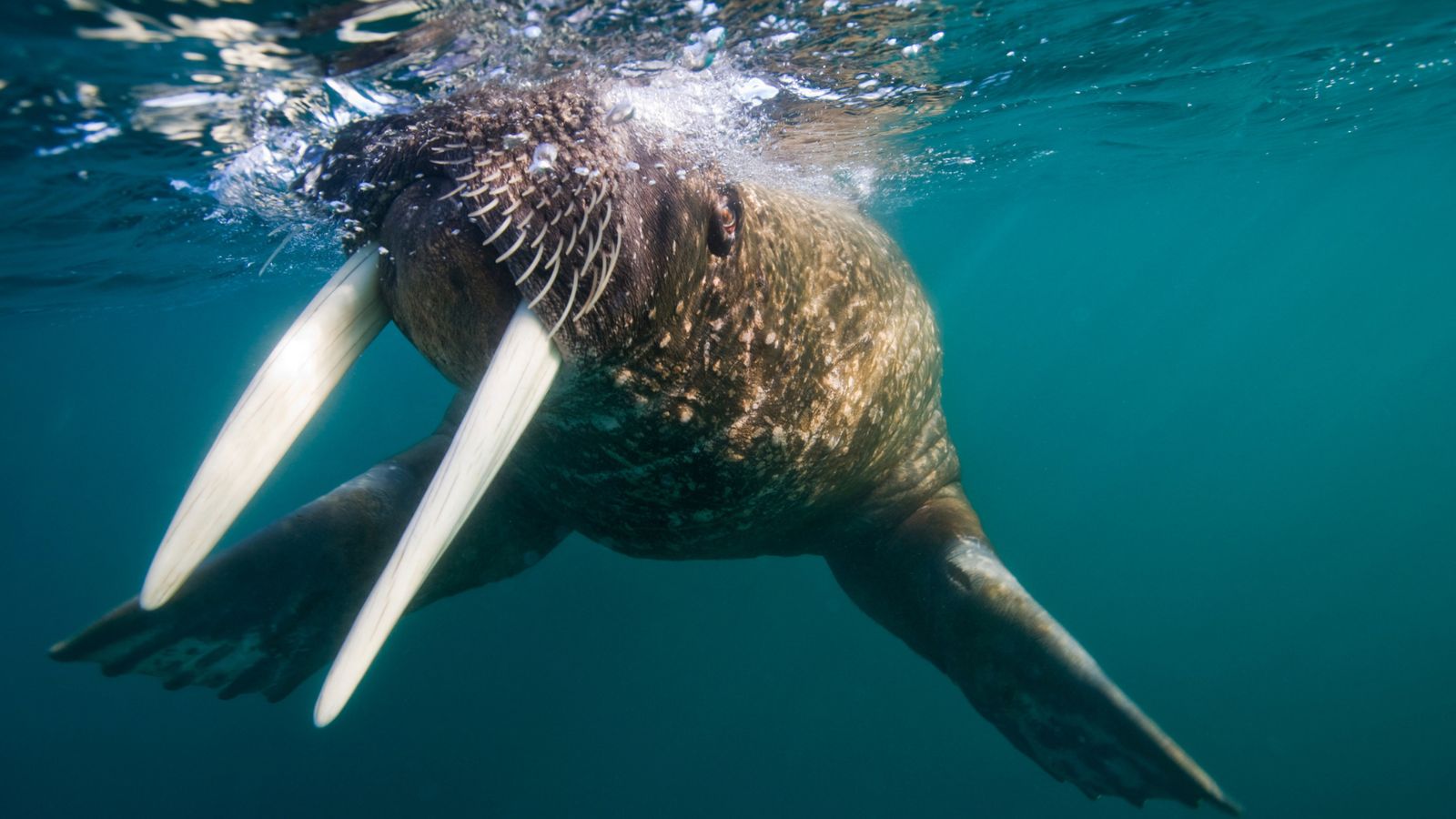
Male walruses will produce a sequence of knocks and barks in order to attract females during mating season. It’s an impressive sound, and it can last up to an amazing 65 hours at a time. That’s a lot of energy to find a mate!
Walrus Mothers Are Extremely Protective
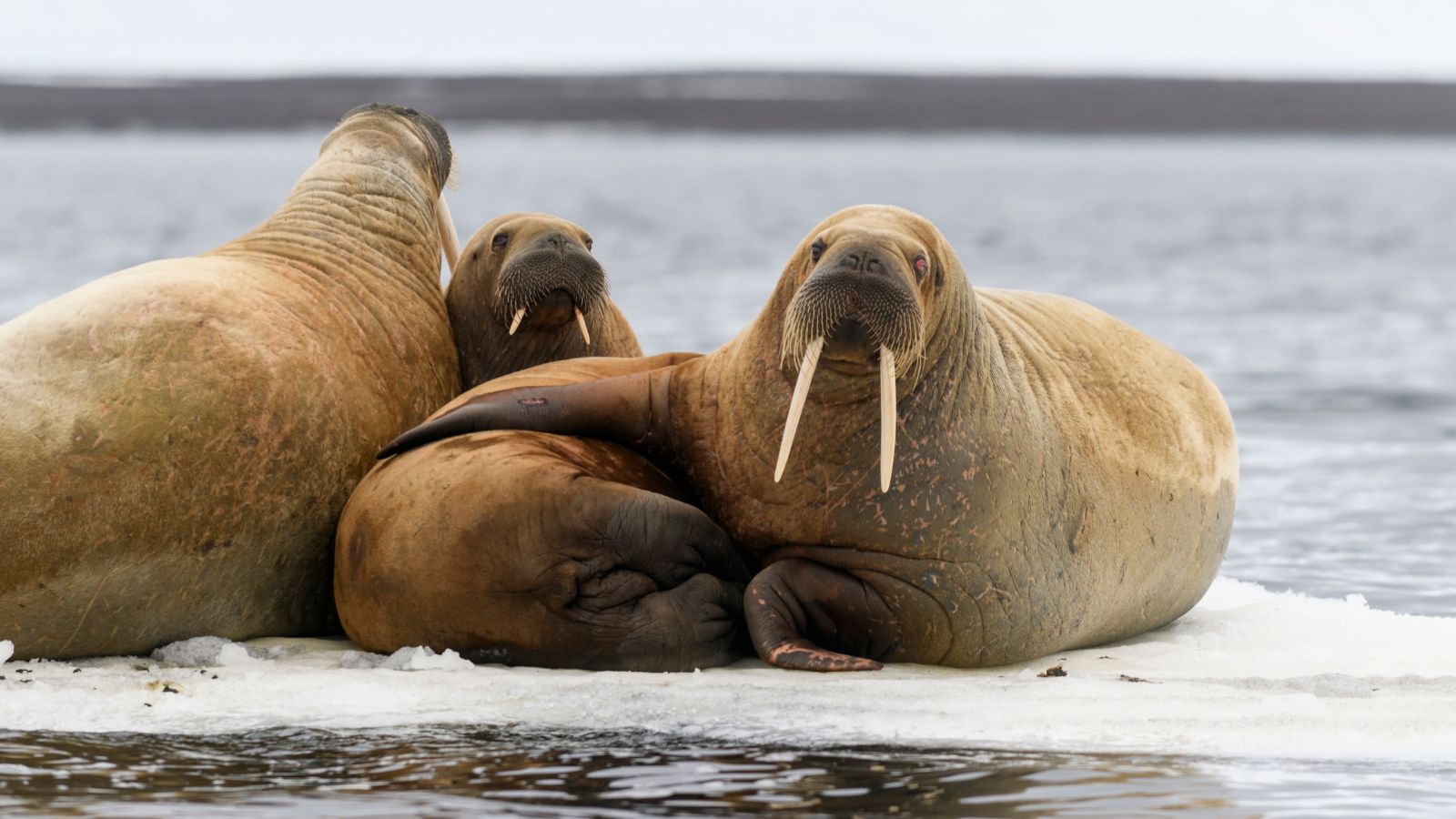
Seaworld reports that walrus mothers are particularly protective of their calves. The female walrus will defend her calf intensely and may shelter it underneath her chest and between her flippers to ensure that no harm will come to it. That’s one way to keep a kid safe.
They Have Epic Tusks for Multiple Uses
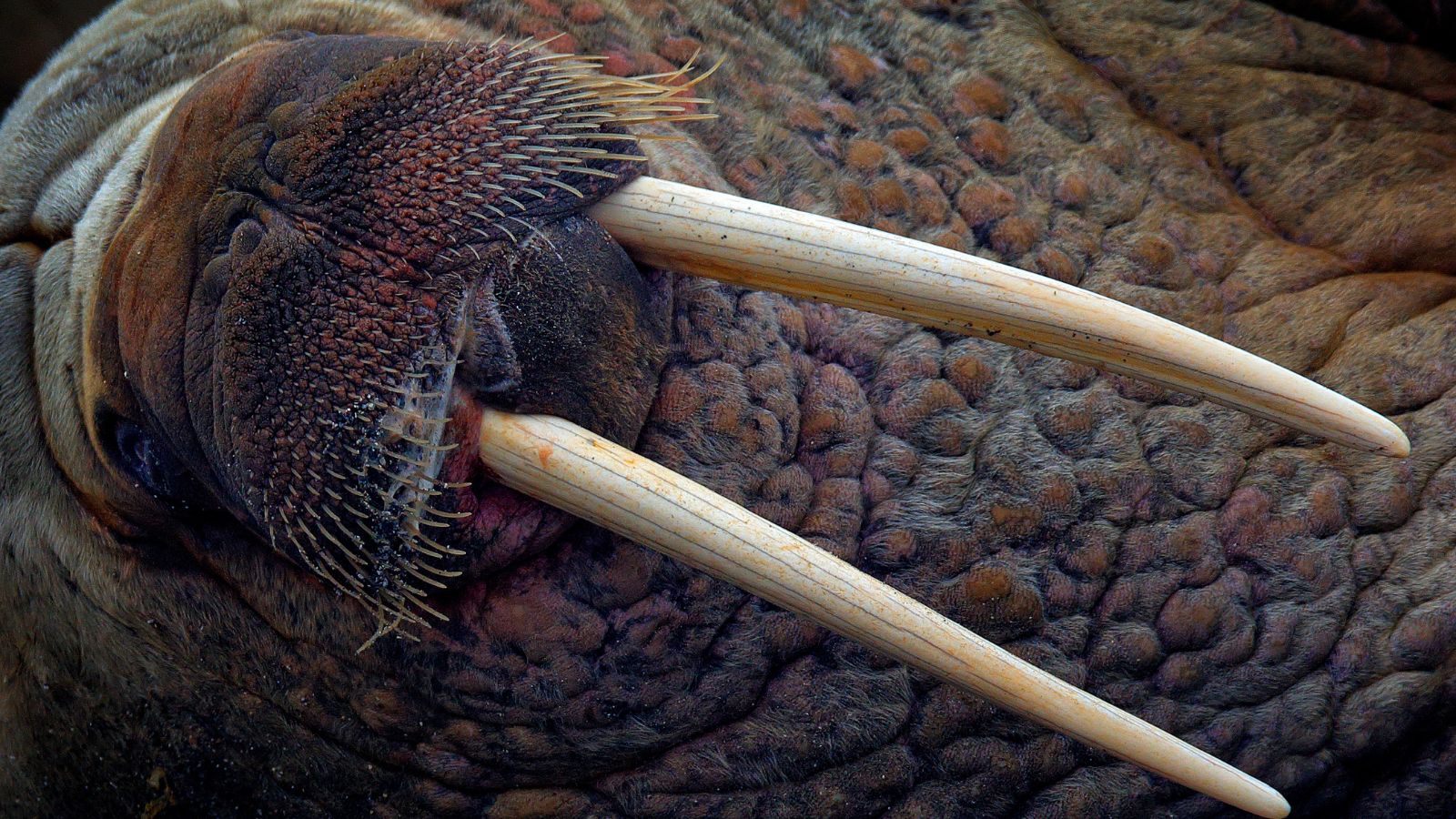
The tusks of a walrus can grow up to a mighty 3 ft long. But they’re not just for show. The walrus uses these monsters to haul itself out of water and to defend itself (or attack) in a fight. Another impressive use of the tusks is to help keep breathing holes open in ice.
Walruses Are Very Social Animals

You won’t often find a lone walrus. These creatures tend to live in large herds (often made up of 100s of walruses) that are usually separated by sex. One of the key reasons for this herd behavior is that being close together keeps the walruses warm.
They Migrate With Ice Floes
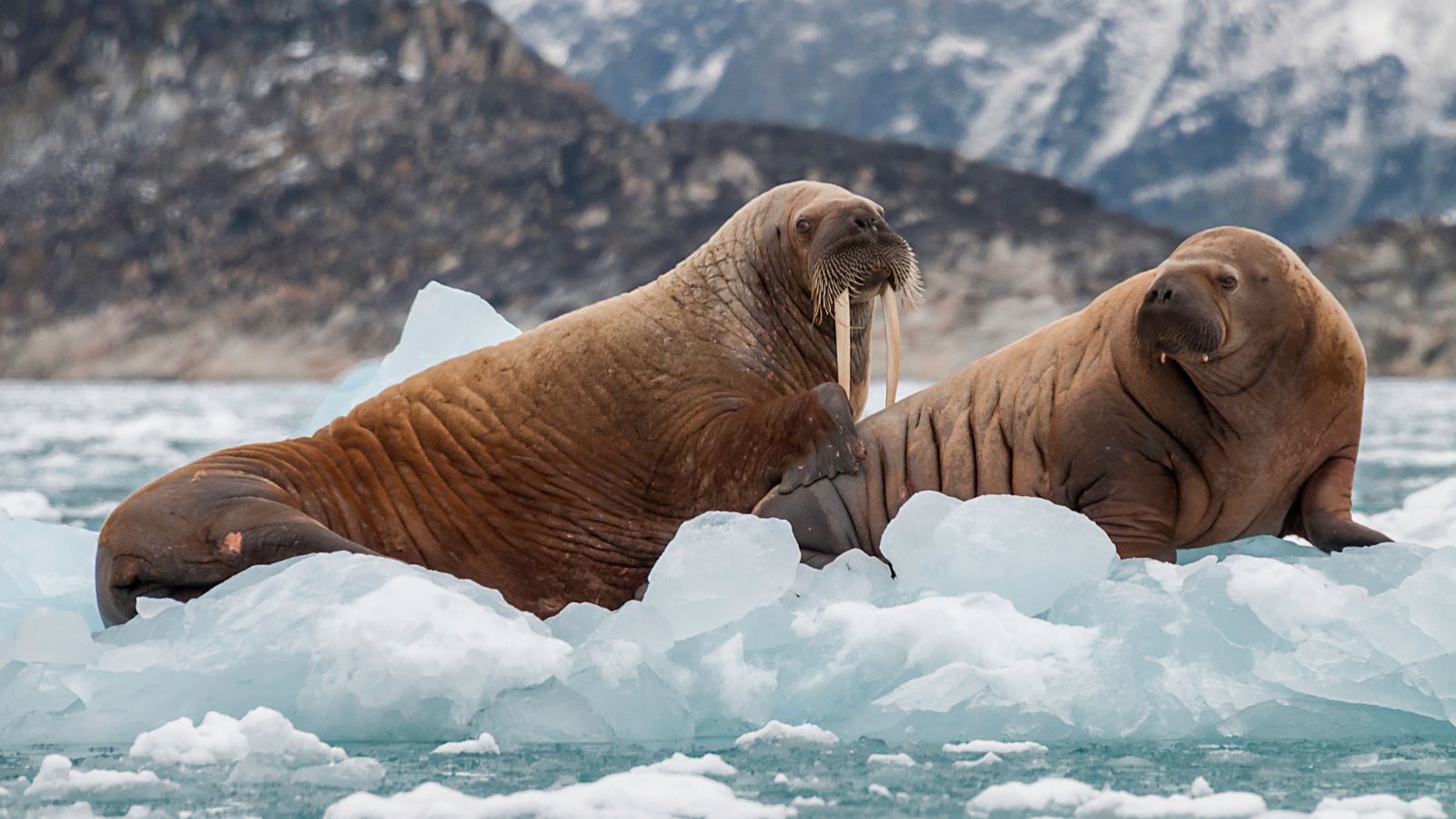
Walruses use sea ice as resting platforms, as you may well have seen photos of in the past. So wherever the ice goes, they go too. But this isn’t just random, as the migration is actually essential for feeding and breeding, so it’s very clever!
Walruses Can Slow Their Heartbeat

Information from National Geographic Kids shows that the mighty walrus can slow down its heartbeat to withstand the colder Arctic waters. By doing so, it can withstand these freezing conditions for up to 10 minutes at a time.
They Are Masters of Insulation
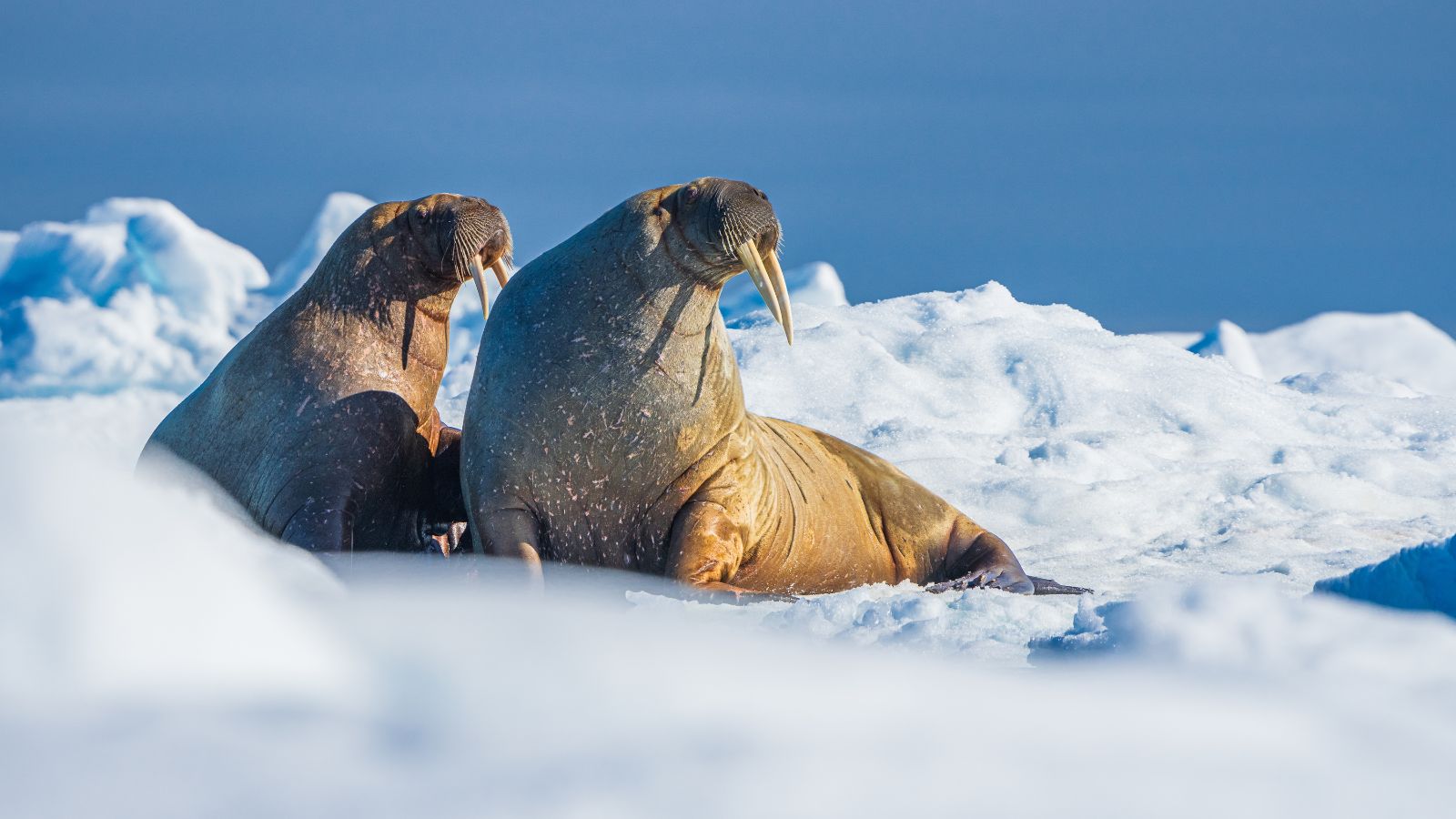
The thick blubber of a walrus keeps it warm during the cold months so that more energy can be conserved and less hunting is required. It’s a very efficient system! It’s also very warm it is, as this layer can be up to six inches thick.
Walruses Are Known to Sunbathe
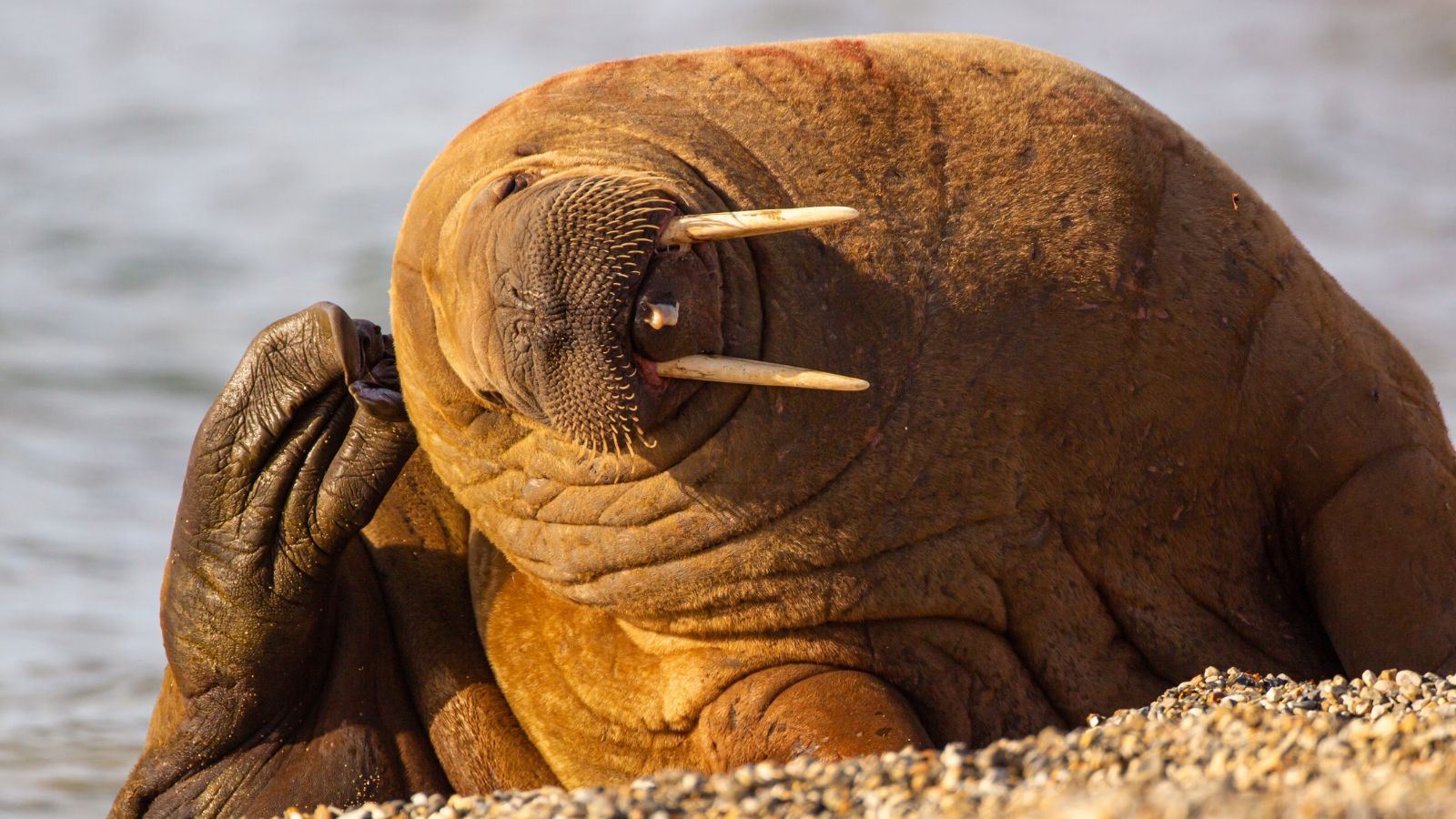
You’ll often see walruses basking in the sun on the ice or even on the beach. They’re not that dissimilar to humans in that respect! Walruses like to stay near shallow waters as they provide easy access to food, and sunbathing goes hand in hand with that.
Their Latin Name Means ‘Tooth-Walking Sea Horse’

This peculiar translation might seem totally made up, but we promise you it’s true. ‘Odobenus rosmarus’ is the Latin name that translates to ‘tooth-walking sea horse’. It might look a little silly, but we can see where they were coming from with this name.
They Have More Blood Than Land Mammals of Similar Size

The extra blood that walruses have in their bodies has important practical implications. The blood stores oxygen, which helps them breathe while they dive. Of course, there’s a lot of oxygen required for a creature as big as these.
Walruses Were Nearly Hunted to Extinction
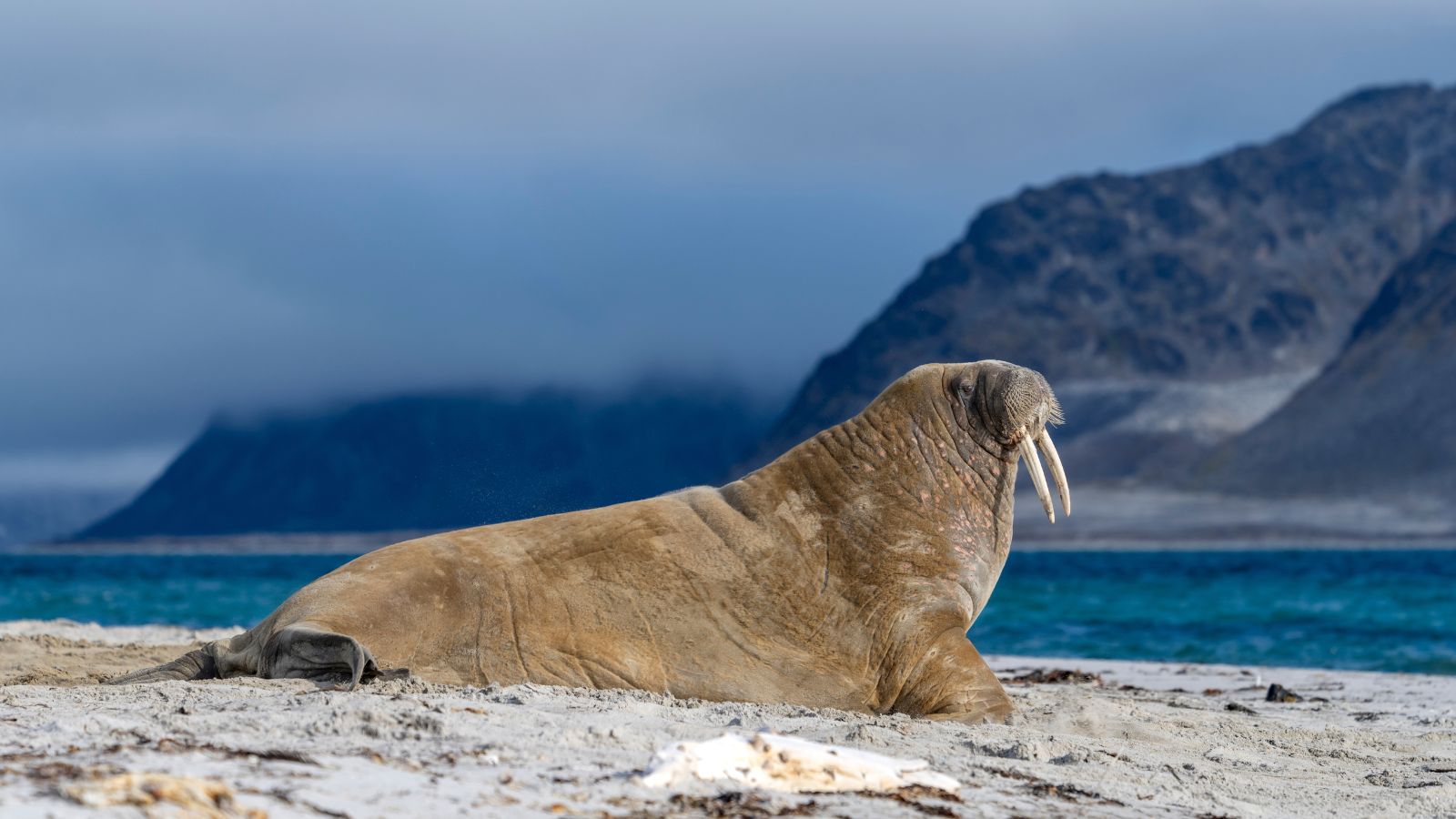
Hundreds of years ago, this incredible creature was nearly made extinct because of excessive hunting for meat, oil, and its tusks. Fortunately, this was stopped just in time, and conservation efforts have enabled it to recover to some extent. Thank goodness.
Their Populations Are Divided Into Two Subspecies
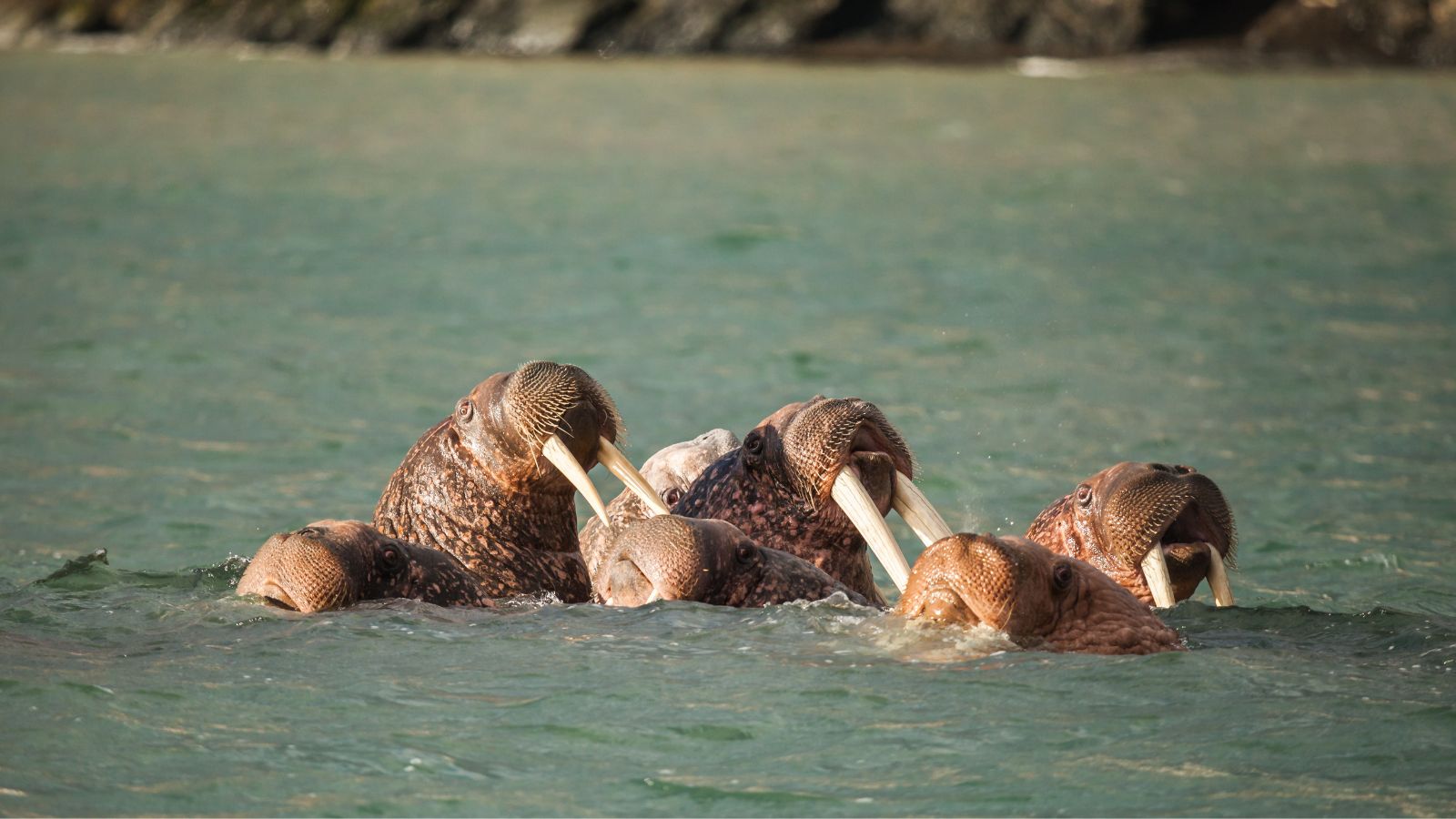
We’ve come to know the walrus as one single species but it’s actually divided into two: the Atlantic and the Pacific walrus. Of course, these are opposite sides of the world, but the behaviors and adaptations of each species are pretty similar overall.
They Have Long Lifespans

The Alaska Department of Fish and Game estimates a walrus’s lifespan at up to 40 years. That’s a long life for both Pacific and Atlantic Walruses, but sadly, humans often shorten it. We need to do better!
Climate Change Is a Major Threat
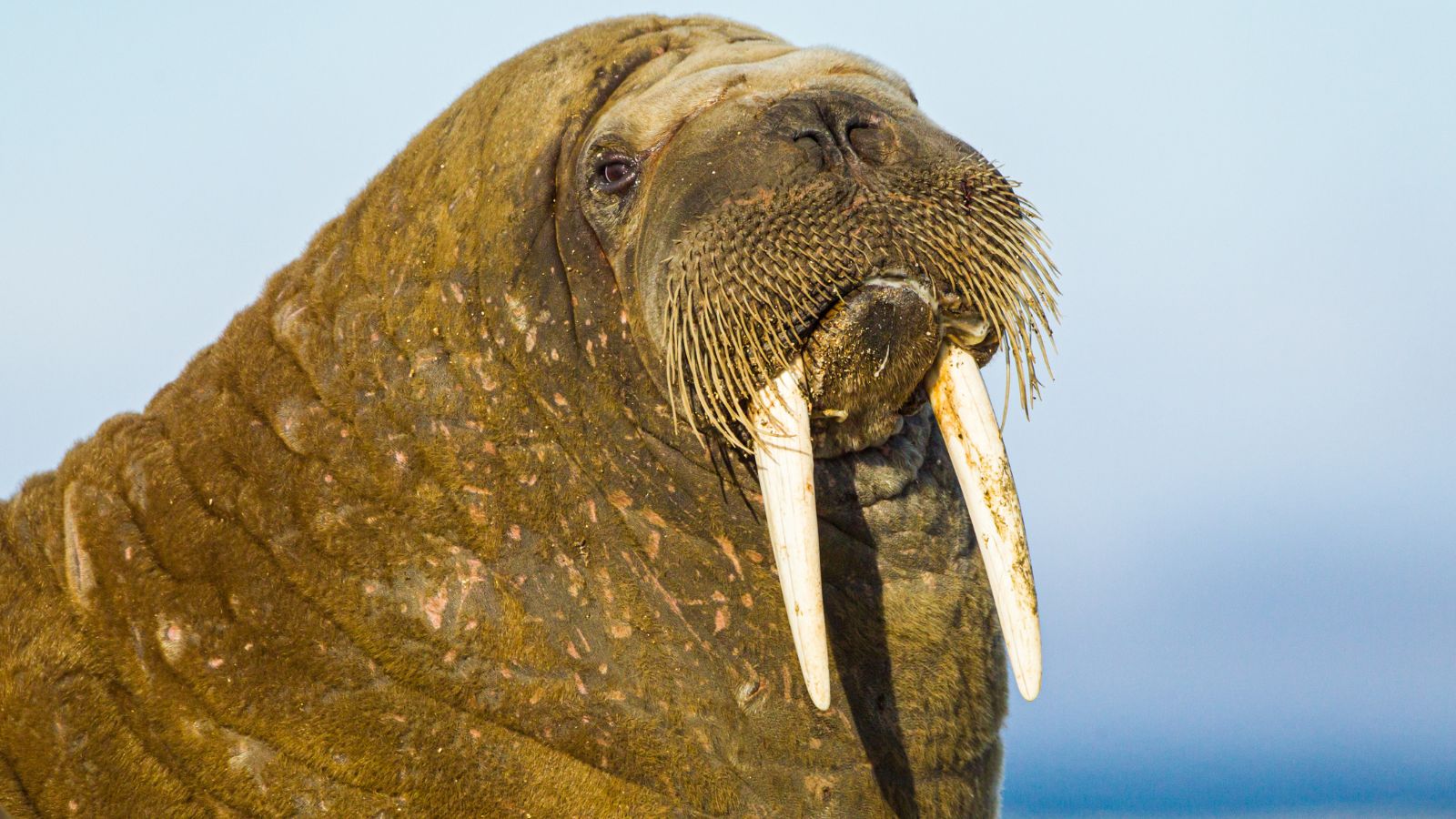
The threat to walruses is far from over, though. These creatures rely heavily on ice, as we have found out already, and with all the ice melting, their habitat is being destroyed. Walruses now find it harder to feed and migrate, as well as just to stay afloat.
Walruses Have Special Whiskers Called Vibrissae
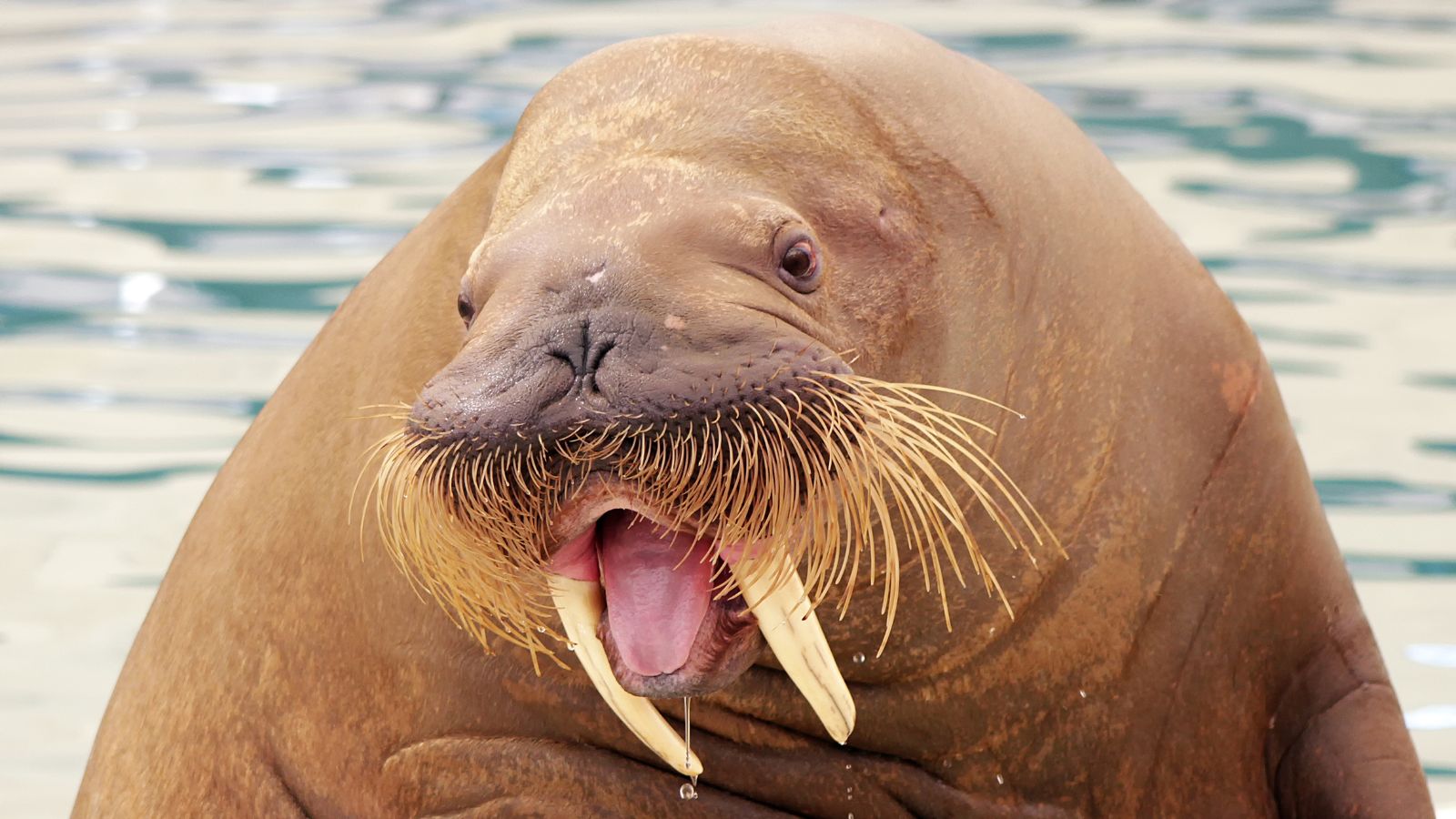
Walruses’ whiskers look cute, but they’re far from just being about aesthetics. In fact, they are super sensitive tools that allow them to locate prey and navigate the seafloor to find food. As such, they’re pretty integral to the survival of the species as a whole.
Up Next: 17 Places in the U.S. Where Even Truck Drivers Won’t Stop

Truck drivers tend to be hardy souls—well-seasoned travelers who aren’t often afraid to rest up or refuel in risky locations. However, there are certain U.S. locations that even the most road-weary trucker refuses to stop at for fear of criminal activity or natural dangers. Here are 17 such locations that even experienced truck drivers approach with trepidation (or not at all).
17 PLACES IN THE U.S. WHERE EVEN TRUCK DRIVERS WON’T STOP
17 Things Guests Actually Notice Right Away About Your House

Inviting people into your home is a big deal. You may be very house-proud or house-conscious, and if you are either, you’ll likely get anxious about hosting. If this sounds like you, stop worrying and focus on the following 17 things that guests actually notice right away about your house.
17 THINGS GUESTS ACTUALLY NOTICE RIGHT AWAY ABOUT YOUR HOUSE
The 17 Unhappiest States in America

The US has hit an all-time low position in the World Happiness Index, tumbling to 23rd in 2024. However, it’s important to remember that location is an important factor; many US states are very happy, unlike the following 17 US states that appear to be the most unhappy.

